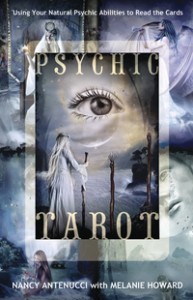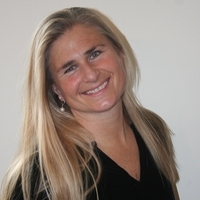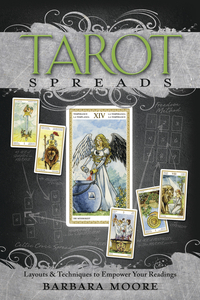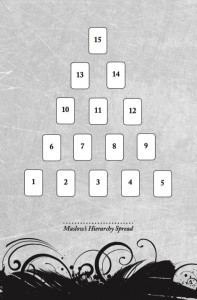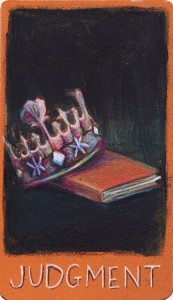Llewellyn Publications's Blog, page 56
December 29, 2015
How Does Tapping Work?
Readers, please enjoy this guest blog post by Kathilyn Solomon, author of the new Tapping Into Wellness.
 When people call for a consultation about EFT, otherwise known as Emotional Freedom Techniques or tapping, they usually ask a question along these lines: “Will EFT work/fix/help/heal my: pain/cravings/social anxiety or depression/short temper/attachment to clutter/grief/money troubles/unhappiness with my body…?”
When people call for a consultation about EFT, otherwise known as Emotional Freedom Techniques or tapping, they usually ask a question along these lines: “Will EFT work/fix/help/heal my: pain/cravings/social anxiety or depression/short temper/attachment to clutter/grief/money troubles/unhappiness with my body…?”
As tempting as it is say, “Yes, come on in,” that answer is too simplistic. I say that my work with clients has collapsed the emotional contributors that have been holding their problem in place, whether that problem is presenting itself as:
Emotional: “I’m anxious all the time,” or “I can’t deal with the grief,” or “I’m such a bad parent!” or “I can’t get this bad memory out of my head,” or…
Physical: “My horrible back ache!” or “I hate this auto-immune illness,” or “I have low energy,” or…
Behavioral: “I can’t control my cravings,” or “I can’t control my relationship behaviors,” or…
Performance-based: “This public speaking phobia is ruining my career,” or “I was fired for the third time” or “My professional game is so off since the crash/injury.”
I’ve just listed a whole bunch of different scenarios, but guess what? They all follow the same path with regard to the EFT process. First, consider the problem you want to solve as the tippy-top of a pyramid. The foundation of, or layers under, that problem pyramid are the details, past memories, thought-patterns, and beliefs, all the way back to your childhood. These are holding the problem up. EFT calls the problem a tabletop, and these details and events, the table legs. Tap on the details, the table legs, and the whole problem pyramid collapses. It’s that simple.
How do you do that, though, when you can’t figure out how to let the problem go? First, you ask yourself this question: When’s the first time I felt this way? What does this upsetting feeling or image remind me of? What was happening around this time of my life when this problem started?
Ask just one of these questions and you may be surprised that the answer is leading you to the bottom rung of the pyramid, and when you tap on that, you’ll find the pyramid getting closer to toppling to the ground.
For example, EFT was a primary driver in healing my own fibromyalgia, which is what led to me becoming an EFT practitioner. But was it enough for me to say the EFT setup phrase to heal: Even though I have fibromyalgia, I deeply and completely accept myself? Not quite. The fibromyalgia problem was at the top of the pyramid I mentioned above. I addressed the different triggers (the foundation blocks of the pyramid) going all the way back through my childhood to heal. These included past events that appeared to be among the table-legs holding the tabletop fibromyalgia in place, in particular unresolved grief and early childhood memories, the belief that it’s not safe to be healthy and when I am sick I am loved, issues relating to self-blame and that somehow the sickness was my fault, fears relating to never getting better, my feelings about what family and friends said to me, and how our culture values people who are not considered “productive.” Naturally, this took some persistence. But it was worth it!
Am I saying you have to work this much in each situation? Nope. For example, a gal came to me who had had a fear of heights her entire life. We started the tapping process while standing at the top of a staircase. I asked her what the feeling she was experiencing reminded her of. Immediately, she said, “I remember the time mom and dad were arguing and we were hiking on a high plateau and I was close to the edge and scared.”
I didn’t question the logic here. And with EFT, don’t question your logic; follow what comes to mind and you’ll go far. We tapped on that traumatic memory, which was also wrapped up in her father leaving the family shortly after that argument she witnessed. And as we resolved her fear from that early memory, her stair phobia disappeared. In one session. I also tapped on every single detail that scared her about walking down the stairs until each one of them had no charge at all.
It’s common for your subconscious to make the connection between the trauma of an early event and a problem today. For example, another client’s fear of public speaking was tied to two childhood events, one in which a neighbor asked her a question and she didn’t answer, and when the neighbor left, the client’s mother said to her, “Are you really that stupid?” and a second event in which she was punished for saying something that her father thought was “out of line.”
So, will EFT work for everyone? The answer is yes. And Tapping Into Wellness will help you understand how to tap, how to get specific, how to uncover the hidden triggers, and give you a reference you can turn to again and again.
Our thanks to Kathilyn for her guest post! For more from Kathilyn Solomon, read her article, “How to Use Tapping to Ease Stress, Pain, and Grief.”
December 23, 2015
The Destiny Self
We’ve all seen the exercises where we are encouraged to write a letter to our younger self. It’s a great way to highlight the wisdom we’ve gained and to remind ourselves that what we think is the end of the world now will not seem so horrible with distance. But we can also access our future self. In Psychic Tarot, Nancy Antenucci provides a great activity.
Connecting with your future self from Psychic Tarot
You will need paper, a pencil or pen, and perhaps some markers or crayons. Sit down with the supplies in front of you. Use whatever method works best for you to enter spirit space. Breathe to relax.
Imagine yourself on the last day of your life, an older version of yourself who has completely manifested this life’s destiny. Listen quietly as this future self appears. Ask this future self what you need to be on your path of authentic living or what may be needed to change your current direction.
For the next fifteen minutes, just scribble or color. Put on music, if it helps. Just let the insight flow through your hands. Be very free wit this time. Remain open to receive a response through a message or image.
At the end of the fifteen minutes, if you didn’t receive any ideas, images, or knowledge of some sort, go to whatever book you’re drawn to in the room you’re in. Open a page and point. The Sight words beautifully through synchronicity in the natural world.
December 22, 2015
Empower Your Life!
Readers, please enjoy this guest blog post by Nathalie W. Herrman, author of Daily Enlightenments and the new Art of Good Habits.
Fear is a paralyzing proposition. It holds us fast, clinging to what’s familiar—even if we’re unhappy, in pain, or otherwise out-of-whack. We are afraid because we feel like victims of all that we cannot control, and in some way, we are.
And yet, there is plenty we can do, and plenty we can change, and plenty we can improve in our lives in order to feel great, to live with joy, and to experience rapture and blessings and love and success. Fear recedes with each empowering step that we take, and courage grows.
We can start small and experiment with reasonable risks. If we are afraid of people, we can say hello to a familiar cashier and ask about her day. If we are habitually angry at others, we can pause before yelling, and if we tend to overeat, we can slow down while we chew.
Our power comes from our ability to choose, and what we experience is the result of the choices we make. So fear is more of a fallacy than we realize. It tells us we are stuck when we are not. We have simply to make a different choice, and in so doing, empower ourselves. Self-empowerment breeds life-satisfaction, and stepping up to choose what we want gives us what we want.
We tend to over-complicate our circumstances to the point of distraction and distress. But, it’s simpler than we can possibly imagine to change what is not working and create the life we’ve always dreamed of. It starts with a decision. We breathe in and take our first tentative step; we breathe out and take another, and another. Our confidence grows. Our fear diminishes slightly. We begin to feel a bit of confidence and a sense of control, and we like the feeling. We step again.
Moving persistently in the direction of our desire in this, way we feel vital and alive. So let’s leave our fear by the wayside and believe in what’s possible, in all that we can do, and in all that we are. We are vast beyond measure and creative to the core. Even if we doubt ourselves, our ability is certain. It’s one step and then another: a decision, and a choice. We step away from what no longer serves us and step towards our joy. We can do it! It only takes a steady succession of simple steps to enliven and empower our lives.
Our thanks to Nathalie for her guest post! For more from Nathalie W. Herrman, read her article, “5 Steps to Achieve Any Goal.”
December 9, 2015
Maslow’s Hierarchy Spread
From Tarot Spreads: Layouts & Techniques to Empower Your Readings
Maslow’s Hierarchy of Human Needs divides human needs into five levels. According to this theory, the bottom level must be fulfilled, or nearly fulfilled, before attention can be given to the next level. In very basic terms, a starving person is less interested in spiritual development than they are with finding food.
This spread can help you see where you are in terms of your human needs. Positive cards usually indicate the need is being met in a healthy way. Negative cards often show that the need is not being met or being met in an unhealthy way. By identifying the unfulfilled spaces, you can then make a plan to move forward and progress on your personal and spiritual growth.
Cards 1 – 5. Physiological: The basic needs of breathing, food, water, sex, sleep, and shelter.
Cards 6 – 9. Safety: Security needs like employment, protection, resources, and health.
Cards 10 – 12. Belonging: Human relationships, such as friendship, family, and intimacy.
Cards 13 – 14. Self-Esteem: A sense of self gained from confidence, achievements, and respect.
Card 15. Self-actualization: Realizing and fulfilling personal potential, spiritual and personal growth.
December 8, 2015
5 Things to Do with a Wand
Readers, please enjoy this guest blog post by Alferian Gwydion MacLir, author of Wandlore and the new Witch’s Wand.
In my first wand book, Wandlore, I wrote at length about the process of making magic wands. My forthcoming book, The Witch’s Wand, focuses on that question people often ask me: How do I use my wand? Well, here are five ideas.
Meditate Holding Your Wand.
The dryad spirit of the tree from which your wand branch came and the spirit of your wand is a living thing. Like a familiar spirit, your wand is a helper, guide, and counselor. Sit with your legs crossed on a pillow or mat, or however is comfortable. Hold your wand in your dominant hand and rest the point in the palm of your other hand. Then meditate, clear your mind, and engage in conversation with your wand. Open yourself fully, because it communicates like a tree—in non-verbal ways, direct to your mind. Just listen.
Take a Trip with Your Wand.
Next time you go astral traveling, keep your wand in your hands, resting on your breast. It will spiritually go where you go and can be used on other planes of existence just as you would on the material plane. Keep a spell of protection in mind and ready at hand for any entities who might wish to harm or mislead you.
Cast a Circle.
Depending on your ritual tradition, you may cast your circles with a sword, a staff, or an athame. Try using your wand. Visualize from it the kindling ray of blue fire that illuminates a circle of protection and peace around you in preparation for other work. See if using the instrument of your will feels differently from using another tool. Once done, sit in the middle, light some incense, and contemplate that circle of blue fire for awhile without engaging in any other work.
Cast a Spell.
Spell casting maybe doesn’t even need to be mentioned. That’s the main thing a wand is for, right? True, but how do you do it? Assemble the material elements of your spell, consider what runes or sigils you will use to set the intention of the spell into these components. Then when you are ready, use your wand to point at the components of the spell and to draw the sigils etherically in the air.
Salute the Sun.
This is really two things, because you can also make the same observances to the Moon. Stand in a prepared circle with your wand in your dominant hand, placed across your breast. Cross this with your other arm. Then as the Sun rises, sets, or reaches its zenith, uncross your arms, uplift your face (without blinding yourself), and say, “Hail unto thee, Source of all Light and Life. Shine upon me this day and fill me with thy love and strength. Hail unto Thee, Sun. Hail unto Thee.” (Or use words of your own devising.)
Our thanks to Alferian for his guest post! For more from Alferian Gwydion MacLir, read his article, “The Witch and the Wand: Dryads and Gesture in Magic.”
November 30, 2015
How Many Chakras Do You Have?
Readers, please enjoy this guest blog post by Cyndi Dale, author of a number of books, including The Complete Book of Chakra Healing and the new Llewellyn’s Complete Book of Chakras.

Pop quiz: Which answer reflects how many chakras you have?
Seven
Twelve
Three
Dozens
The correct answer is any of the above, depending on your cultural perspective.
Chakras are subtle energy organs. Just like your physical organs, such as your liver or heart, each chakra runs a part of the body. But each also manages psychological and spiritual concerns, which makes them incredibly important.
If you’ve ever taken yoga, you were probably told there are seven in-body chakras. The truth is that there are dozens of cultures that add the numbers differently, depending on their point of view.
For instance, one of the earliest Hindu sources of chakra knowledge presents six chakras, although yet another contemporary text outlines eight chakras, which, if meditated upon, grant magical powers, including the ability to become tiny. Ayurveda medicine utilizes 107 to 117 “marmani points,” which are subtle energy centers, and Zulu, Jewish, and Kamitic systems incorporate ten-plus chakra-like spheres placed on a Tree of Life.
Plato described three parts of the soul that relate to three different bodily parts, which are eerily similar to chakras; one Incan system counts nine chakras; a Sufi schematic counts five main centers; a Korean philosophy offers eleven main chakras and several minor ones; and several Hindu systems pinpoint so many secondary chakras, many extending beyond the physical body, that the numerical count far surpasses a dozen.
The beauty of learning about these systems is that you can customize your spiritual work to your own personality. So, the next time you are asked how many chakras you have—you can decide for yourself!
Our thanks to Cyndi for her guest post! For more from Cyndi Dale, read her article, “Chakras Around the World: Are There Really Seven Chakras?.”
The Paranormal Epiphany
Readers, please enjoy this guest blog post by Sarah Soderlund, author of the new Haunted by the Abyss.
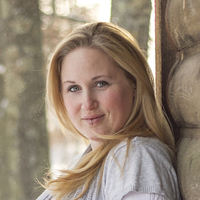 I have the honor of talking, lecturing, and even writing about my paranormal adventures all over the world, but only just recently did a certain question prompt a moment of introspection that made me realize everything has changed.
I have the honor of talking, lecturing, and even writing about my paranormal adventures all over the world, but only just recently did a certain question prompt a moment of introspection that made me realize everything has changed.
I used to be a young, motivated student on a quest to gather the most undeniable paranormal evidence that those in my life who had refuted my most intimate supernatural experiences would be forced to believe. My motto on my website was to “bridge the gap between science and spirituality,” and I truly believed I could do it. I traveled to Paris, France for a late night investigation of the bone-infested catacombs, and I stood at the base of the London Tower believing that my evidence could change the world. I suppose it is natural for everyone to have that self-prophetic vision of themselves, an ego larger than life, but I truly felt within my soul that there was something about my haunted childhood that would keep me focused and diligent on my quest to be “right” about it all; that the paranormal was real. Each time someone got word of my reputation as a paranormal investigator there was either a newly formed friendship on the brim of blossoming or I was facing another “non-believer.”
Over time, however, the skeptics had taken a new form; they were not just objective people with questions, but rather somehow seemed to mock me, which brought back harsh memories I had been trying to bury from my childhood humiliations as a “weird, ghost-obsessed girl.” For nearly two decades I investigated every weekend, took the darkest cases without fear, and was bound and determined to “change the paranormal field” into something more rational, more logical, and into something people couldn’t laugh or brush off.
However, somewhere along the way, I became a little more “normal.” Investigations gave way to late night study sessions and paranormal case briefings gathered dust underneath college essays and dissertation research. Weeks spent in my car on the road from one haunted location to the next bent to the stability of becoming a mother, signing a lease, creating a home for my two growing boys. My motto morphed from proving something to helping others, and eventually became more of a growing narration of self-exploration. It was a late night interview on a paranormal podcast wherein the host asked, “So what major epiphany or major moment has really changed for you since working in the Paranormal?” that prompted this introspection. I took a long moment, a deep breath, and an awkward radio silence and responded with something that surprised him as well as myself. It had not been a ghost pushing me down some stairs or the acquisition of amazing paranormal evidence, both of which I have countless stories of, but instead was a change of perception. Somewhere along the way I had taken all the amazing paranormal experiences, within my own heart and mind, and it had changed me from the inside out.
It wasn’t a demon, a negative attachment, or some spooky scary story, but instead an accumulation of moments. I realize now that what the paranormal field embodies is not something that will ever fit into the logical, scientific, rational mold that most want so badly. There will never be a mass acceptance of “right” and “wrong” in regards to spirituality, but instead it serves as an intimate piece of each person’s human experience. Just as religion cannot function without faith, the paranormal could not function in a world of absolutes—and for that, I’m thankful. The experiences I’ve had and the stories I share are a part of my human experience, brief steps into the Other Side to see just how amazing things can be beyond the physical realm. Those experiences do not fit into a measurable box, and I’m glad I stopped trying to make something so spiritually beautiful conform to something so logical.
Our thanks to Sarah for her guest post! For more from Sarah Soderlund, read her article, “A Checklist: 5 Considerations When Examining Paranormal Phenomena.”
November 25, 2015
A Fresh View of Judgement
In my opinion, the Judgement card needs a rename as much as the Hierophant. It is such an important card and so many people seem to misunderstand it. Probably in part due to some holdover from the Christian idea of the Last Judgement. Perhaps long ago, this card was read that way, but as our culture changes, so do the card meanings. We this so clearly in the Fool, the Magician, the Lovers, the Hanged Man, and even Death, to name just a few. Judgement and the Hierophant, though, seem to have a hard time shaking their biblical tethers.
As part of my goal to help evolve these cards, I offer the Judgement card from Maggie Steifvater’s recent deck, The Raven’s Prophecy.
Keywords: Judgment, Meditation, Looking Back
This is the second to last card in the cycle of the major arcana, and this card invites you to take a look at where you’ve been. Frequently mistaken for Justice and vice versa, it’s simple to remember the meaning of this card if you think of it as Judgment Day, although it is not really an external reckoning. Instead, this is about you looking back over events in your life, using he objectivity given by tie and experience to think about what really happened. Once you consider who you have been, whether you were right or wrong, how you have improved or not, you can decide who you want to be from now on using that wisdom.
When Judgement appears in your life, it’s giving you a third opportunity to drastically change your direction. It’s not the frightening transformation of the Death card, nor the fiery destruction of the Tower card. Instead, now that you’ve survived those changes, you’re standing at a crossroads with an opportunity to become something new once more…this time with your eyes wide open.
You don’t have to. You can stay the way you are now; this card isn’t a warning. But if you want to have time to start the cycle back over again, to have another chance to begin again at the Fool and learn even more about the world and yourself, you’re going to have to change.
This card doesn’t tell you which is wrong or right. But I will! Slough that skin. Start over again.
November 24, 2015
Wishing On a Falling Star: My Favorite Chakra
Readers, please enjoy this guest blog post by Cyndi Dale, author of a number of books, including The Complete Book of Chakra Healing and the new Llewellyn’s Complete Book of Chakras.
 Have you ever wished upon a falling star? Well, you can actually access a chakra for the same effect. It’s called the “Celestial Wishing Tree.”
Have you ever wished upon a falling star? Well, you can actually access a chakra for the same effect. It’s called the “Celestial Wishing Tree.”
I’m a chakra expert. My book, Llewellyn’s Complete Book of Chakras, contains 1,100-plus-pages of chakra knowledge. If asked about my favorite chakra—and there are hundreds to choose from—I’d select the “Celestial Wishing Tree,” also called the Hrit, Anandakahdha, Kalpataru, and sometimes Hridaya chakra. I think you’ll see why it’s so appealing.
In the Hindu system, this subtle energy center is located under the heart, on the left side of the solar plexus. Visually it’s depicted as a kalpa tree behind an altar. Kneeling in front of the altar, a man prays. Within the boughs of the tree is a white bird.
The kalpa tree, a sacred tree in Hindu mythology, is a wish-fulfilling, divine tree—and that’s exactly the power of this chakra. A small chakra with eight petals, this energy center is considered the place of mental worship. Legend also shares that when we imagine ourselves praying before the altar, the bird carries the deepest wishes of our soul to God. Through being a devotee of God, our desires are fulfilled.
I am a healing consultant and teacher and love integrating this chakra into my work. Mainly I encourage clients to visualize the Celestial Wishing Tree while expressing their most profound desires. I’ve discovered the most powerful responses occur when my clients move the energy of this chakra from the stomach to the center of the heart chakra and operate from there.
Why would I tamper with the traditional location of this chakra? In its most popular positioning, the tree is anchored in the third chakra, which relates to issues of power and mentality. By placing the energy in the heart chakra instead, we lift it to the level of unconditional love. It is within our heart that we are most earnestly able to feel our deepest desires and open to the grace of the heavens.
Do you want to try wishing upon the Celestial Tree? Follow the steps listed below.
Concentrate on the Celestial Wishing Tree in your stomach area.
Breathe deeply and ask the Greater Spirit—God, Allah, Vishnu, Christ, Kali, the Higher Power—to transfer the energy of this chakra into the center of your heart.
Imagine that you are kneeling in front of the chakra’s altar in a prayerful pose, with the tree behind the altar and the white bird in the tree’s branches.
Concentrate on your heart’s truest desires, those that reflect the truth of your soul.
Perceive your dreams raising upward, until the bird folds its wings around them and then flies with them to the heavens.
With gratitude for this process, refocus on your everyday reality. You can decide to leave this chakric energy in your heart or return it to your solar plexus.
Be at peace, knowing that your dreams are coming true.
Our thanks to Cyndi for her guest post! For more from Cyndi Dale, read her article, “Chakras Around the World: Are There Really Seven Chakras?.”
November 11, 2015
Thank you, Carl
Let’s start by saying I can’t believe I’m writing another remembrance on this blog. I’ve lost too many authors in the 10 years I’ve worked for Llewellyn, and now I’ve lost my boss Carl Llewellyn Weschcke. We all have lost a very special person – not just his family, not just the Llewellyn family, but all of the Wiccans, Witches, Pagans, and magicians that I acquire books for, under his mighty imprint. So this is not going to be short.
Carl was a natural-born leader, the kind of person with so much enthusiasm for an idea or a project that others got caught up in it, too. He was a kind, intelligent person who was always looking to expand other people’s minds, by starting with his own. A lot of my fundamental training here at Llewellyn was simply having conversations with him; there was not a single esoteric, metaphysical, or alternative concept that he was not familiar with. He’d photocopy chapters from interesting books for me, or send all of us packets of articles to read. He wanted to spread knowledge and enthusiasm for our topics and our world.
He was the hardest worker I know – not the type of boss that expects everyone to give up their lives and kill themselves for their job, but the type who, himself, never took a break, never rested on his laurels, because there was always more to be done. It’s like he was put on earth with this huge mission and he kept at it day after day, year after year. Truly, his contribution to minority faiths, the New Age, and everything that Llewellyn is known for cannot be underestimated. America’s religious landscape would be a different place today if it weren’t for Carl’s unique mission in life.
When I first started working at Llewellyn, he was still in the office most days, and if not, he always came to our Thursday morning Acquisitions Meetings where he’d hold sway at the head of the table, getting into really interesting discussions about what we were and were not publishing, sharing stories and memories of his career and friendships in the industry, giving his opinions on matter both metaphysical and mundane. (He had a great sense of humor, too.) When he became unable to come in every week because of mobility issues, he made sure he was able to continue his work in the huge office and library that was on the lower level of his home, connected by our IT department to the rest of us. There, he reviewed what we were bringing in to Acquisitions, as usual, sending us messages of approval or encouragement before the meetings. Sometimes a book really excited him and he’d write a great deal about why it was important to publish it. During that time, by his own accounts he worked 70 hours a week on his computer.
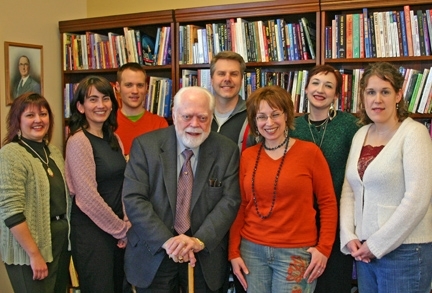
The Acquisitions Department, circa 2005. Publisher Bill Krause is to the right of Carl, next is Barbara Moore, who still does tarot acquisitions, and that’s me next to her, in the green.
While he could have been taking it easy in semi-retirement mode, he began instead to write books with his friend Joe Slate. Huge books! I still have no idea how a person could have such prodigious output in his 80s; I suspect it’s because he was very active mentally but physically not so much, so this was the perfect use of his time. To pass along all the wisdom and experience that he’d collected over his half-century of owning Llewellyn and being steeped in its books and knowledge. Recently though, he knew his limitations, even if he wasn’t happy with them. When letting me know last month that he wouldn’t be writing a foreword for an author who had hoped for one, he said, “I would want to read the whole manuscript, but with my present eye problems I need to ‘ration’ my time to my own work.”
When he first bought Llewellyn, it seems to me (although I wasn’t there) that he pretty much did everything. He edited books. He did the layout and typography. He sold the books, advertised and distributed them himself. He attended BEA, he started a bookstore, a newsletter, a conference, at a time when Pagans were hard-pressed to find other Pagans. He made that idea of gathering the tribes into a reality, and inspired countless others to follow in his footsteps: to be public about Wicca and witchcraft, to connect with others, and to fight for the rights of minority religions. He made sure that Oberon and Morning Glory’s “witch wedding” was publicized in the local papers. He convened the “American Council of Witches” in 1974 to set forth common beliefs, which then translated into helpful guidelines for military forces and prison populations. He always, always believed that people could do better and that enlightenment was just around the corner – if you were willing to work for it.
Yes, back to the work theme. Did I mention he was an incredibly hard worker? I’m just looking over our emails. We corresponded a great deal about Donald Michael Kraig’s Modern Tantra, a book that Don had been working on when he passed away in March 2014. We had meetings about it, Carl rewrote the foreword for it a few times, and it was very important to all of us. When I came to work this Monday morning, Don’s book had just arrived on my desk from the warehouse, hot off the presses. As I leafed through it, admiring how nicely it had turned out, I did have a sad moment remembering Don. How significant that just hours later I would find out Carl had passed, and most likely was already catching up with Don… and Isaac Bonewits and Margot Adler and Morning Glory Zell and Stephanie Clement and Patricia Monaghan and Scott Cunningham and Israel Regardie and countless other friends and associates… But it does sadden me that neither Carl nor Don saw the finished product in their incarnations on earth.
But Carl had much to be proud of beyond this book or that; he had a whole body of groundbreaking work that he was responsible for bringing to the masses. In particular, in one email to me he mentioned “the pioneering work Llewellyn did in publishing Sheba, Buckland, Fitch, Fortune, and others – including Crowley – back in the sixties.” He knew that he was a driving force behind the movement, but was still humble about it and always pleased and grateful to be included in lists of influential people. He even told me once, “Scott [Cunningham] used to call me ‘Father of the New Age,’ but I wouldn’t say that even though there’s probably more truth than blarney to the idea.”

Me, Carl, and Oberon Zell, when I brought them together for the first time in 40 years, following Oberon’s 2014 appearance at our local conference, Paganicon. (Llewellyn is a proud sponsor!) We had a nice lunch at Carl’s home, and he got to chat with Morning Glory by phone as well. The photo of just Carl and Oberon together was chosen as Publisher Weekly’s Picture of the Day.
I am grateful that Carl and his wife Sandra saw in me an ambassador for Llewellyn when he was no longer able to travel. Whenever I went to PantheaCon, I would send detailed trip reports to everyone at Llewellyn; when we started doing a hospitality suite there, he was really pleased:
“A really great report which I both enjoyed and appreciated reading. It certainly shows the value of using a suite as a kind of ‘family room’ for everyone to come together, and the value of direct involvement of staff as well as authors in the panels and talks. I always tried projecting the feeling of the ‘Llewellyn Family’ in every way – at ‘home and abroad.’”
That sense of the Llewellyn family is palpable here in the offices. Sure, sometimes we’re a big, messy, dysfunctional family, but Carl always stressed that he was happy to have every single one of us in it. When he couldn’t come to our Yule luncheon for the first time, in 2013, he sent a message to all staff, saying,
“For me, Llewellyn is even more than ‘family’ – it is heart and soul, and even those new people I’ve not met and those who are no longer with us are embraced in my thought and feeling. May we all have joy this season and SUCCESS, SUCCESS, SUCCESS in the coming year!”
(Yes – “Success! Success! Success!” was his motto. And it’s a good one.)
Here is a snippet from a more recent email. He turned 85 this September and, as usual, we all signed a big card for him. He emailed all employees,
“Yes, it is age 85, and rather than pretending to be just 25 (because I look so young, you know), I’d rather still have the energy and drive I had at age 45 when I was able to work 18-hour days back in the old combo-digs on Summit Ave.
“Amazing all that has come and gone over the years – good Llewellyn people, great authors, lessons learned, wonderful adventures, a bit of excitement, and more. Things for the book I should write about our history.”
***
Many people have posted condolences including the customary “Rest in Peace.” Well, I’m not sure that Carl will ever be ready to rest. I like to think that after a very short pause in the action to catch his breath and get his bearings in his new environment, he will be back to work very soon, behind the scenes, working for all of us left on the planet. In closing, I will quote from Carl one more time. This is what he wrote in his tribute to Isaac Bonewits:
“Well, my friend, while I wish you bon voyage on your next life, I have to say: Don’t stop now, for our New Age revolution still needs your help. Keep up the Good Work and practice the Good Life wherever you are.”
Thank you, Carl.
Llewellyn Publications's Blog
- Llewellyn Publications's profile
- 243 followers


